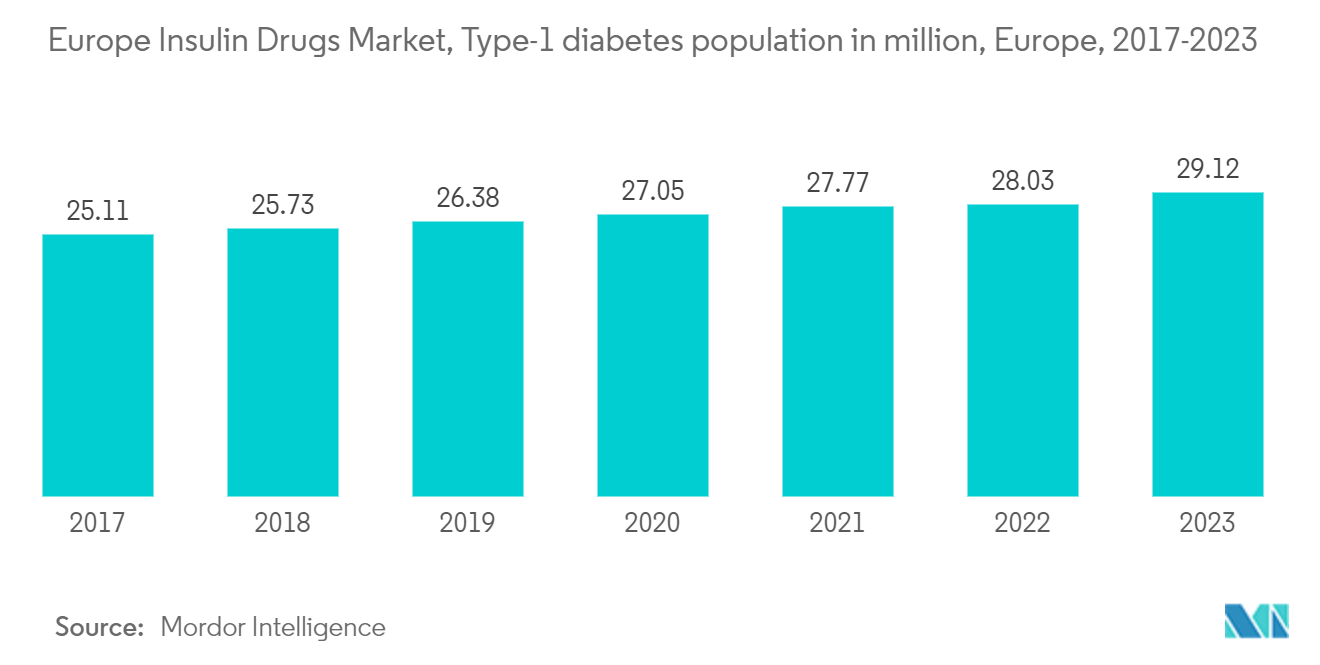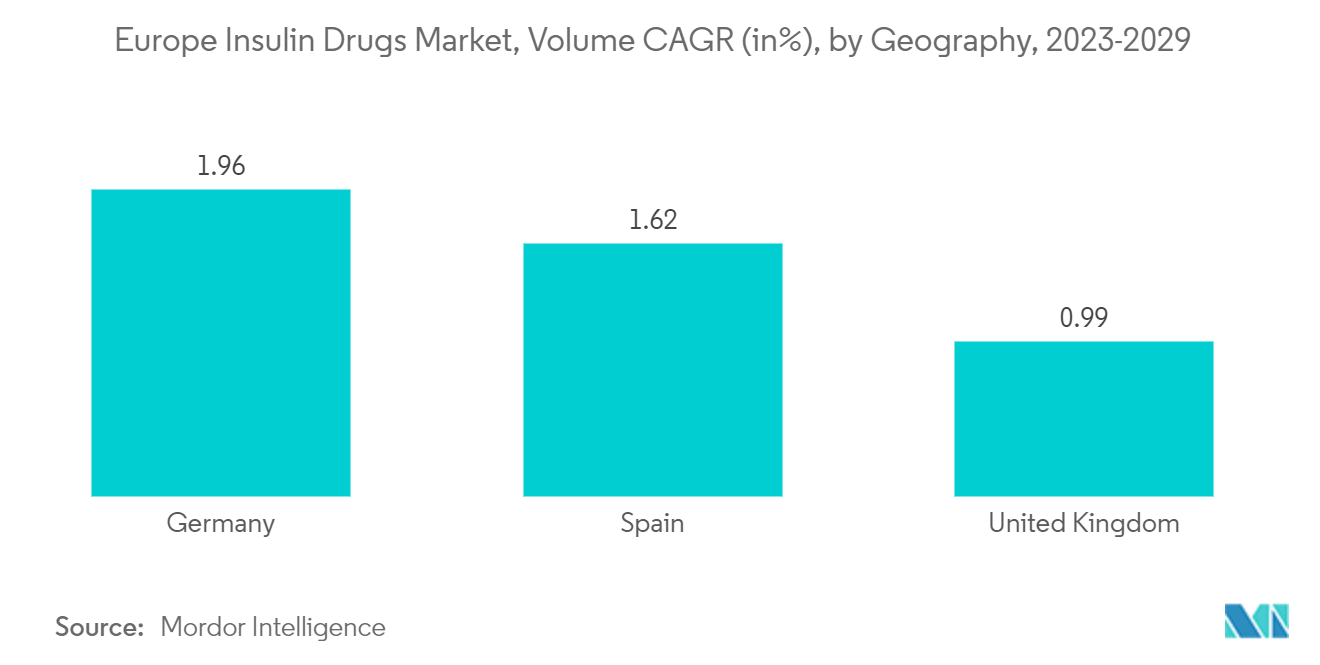Market Trends of Europe Insulin Drugs Industry
Increasing diabetes prevalence in Europe is Driving the Insulin Market
The European region has witnessed an alarming increase in the prevalence of diabetes in recent years. Patients with diabetes require many corrections throughout the day to maintain normal blood glucose levels, such as oral anti-diabetic medication or the ingestion of additional carbohydrates, by monitoring their blood glucose levels.
The rate of newly diagnosed type-1 and type-2 diabetes cases is seen to increase, mainly due to obesity, an unhealthy diet, and physical inactivity. The rapidly increasing incidence and prevalence of diabetic patients and healthcare expenditure are indications of the increasing usage of diabetic drugs.
According to the IDF, the overall diabetes expenditure in Europe among the population aged 20-79 years was USD 156 billion, and it is expected to increase to USD 174 billion by 2040. According to other statistics from the IDF, every year 21,600 children are added to the type-1 diabetic population pool. These figures indicate that approximately 9% of the total healthcare expenditure is spent on diabetes in Europe.

Germany is expected to register a healthy growth rate in the European Insulin Drugs Market
Diabetes is a significant health problem and one of the astounding challenges facing healthcare systems all over Germany. The prevalence of known type-1 and type-2 diabetes in the German adult population is very high, along with a high number of patients who are not yet diagnosed with the disease. Due to an aging population and an unhealthy lifestyle, the prevalence of type-2 diabetes is expected to increase steadily over the next few years. High-quality care, including adequate monitoring, control of risk factors, and active self-management, are the key factors for preventing complications in German patients with type-2 diabetes.
The growing incidence, prevalence, and progressive nature of the disease have encouraged the development of new drugs to provide additional treatment options for diabetic patients. According to the German Diabetes Center (DDZ), at least 7.2% of the population in Germany currently lives with diabetes, which will increase significantly over the next two decades. German law requires public plans to cap out-of-pocket health care costs and to cover all medically necessary treatment, including insulin.
Germany is one of the most developed countries in terms of healthcare facilities. Moreover, the reimbursement policy and the pricing policy are highly regulated, which drives the market. The roll-out of many new products, increasing international research collaborations in technological advancement, and increasing awareness about diabetes among the public are some of the market opportunities for the players in the German insulin drug market.


